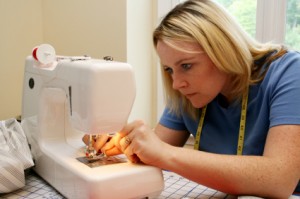How many times have you had to stop in the middle of a sewing project just because your favorite sewing machine decided to the take the day off? I guess many of you have experienced this so I compiled some of the common problems and how to solve them.
1. Your machine isn’t sewing
Check if the needle is inserted correctly, if is backwards it won’t sew. Sewing needles have different sides, which are very subtle and hard to see, but if you stroke one of the sides, you’ll see that there’s an indentation on one of the sides. The indentation side must be facing back when inserted.
2. The stitches have loops appearing within your stitches or tightness and pulled threads when working with fabric corners or skipped stitches or broken threads
Check the machine’s tension on the thread: First option is to check if you’re using the correct thread made for the fabric you’re sewing. The tension disc can increase pressure if you’re using a thicker thread on a lightweight fabric for example.
3. Also check the tension settings
Commonly a good give of thread in most machines is on number 5 but you can set to suit your needs accordingly to the diameter of the thread you’re using. The thicker it is, the wider it is the space you need between the tension discs and vice versa.
4. The thread is breaking
You might be using very cheap thread. If is the lower thread that is breaking check your bobbin, I know that is handy to wound new threads on top of a remaining one but you should start with an empty bobbin. Check the thread path for anything that might be hooking it. Check if the needle is backwards.
5. Skipped or missing stitches
Bobbin is too tight, wrong size needle (use a thin needle for lightweight fabric and thick needle to heavy ones), Old needle, thread is too thick for a thin needle, oil, lack of pressure on the thread).

My Curvy 8763 presser shaft is locked in the upper position and won’t allow the presser foot to move down to the fabric